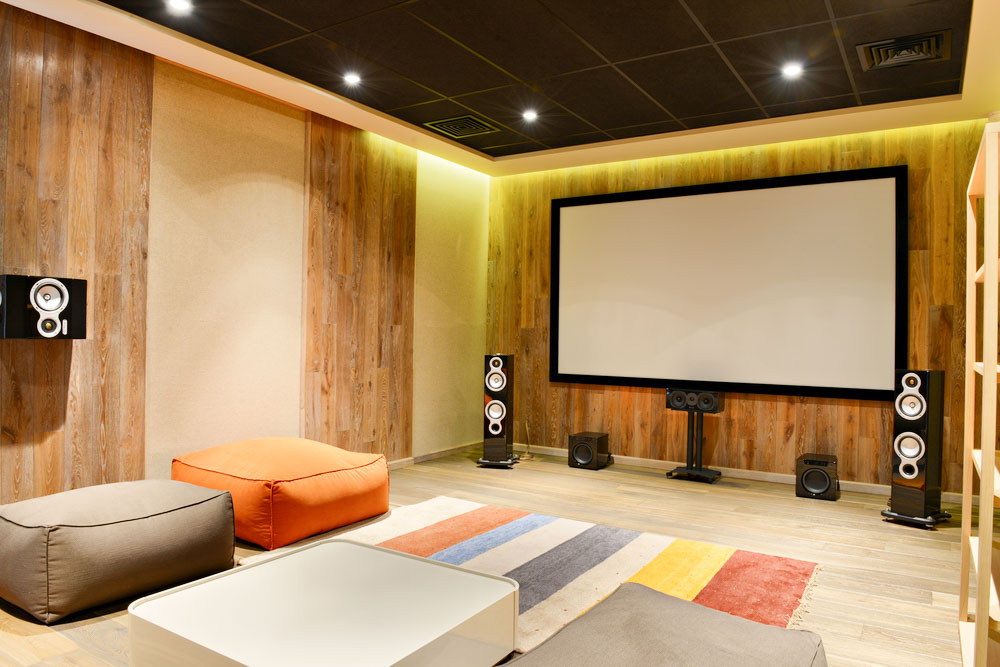
30 December 2019 - As the technology for music recording has become more and more sophisticated over the past 30 years or so, it only makes sense that true music lovers want to enjoy their favorite LPs, CDs or even wav files on the best audio equipment possible. But those world-class amplifiers turntables and speakers, etc. still require the ideal room location to achieve their optimal utility.
That’s why properly setting up a dedicated music listening room in your home can be a truly rewarding endeavour, allowing you a unique refuge to surround yourself with the glorious tunes you’ve come to treasure over the years; indeed a place that accentuates all those wonderful musical details that artists, producers and sound engineers work so hard to incorporate. So, to help you craft your own top-class sound room, here are some easy tips to create the ideal listening room in your residence.
Interior home designs in Hong Kong often tend to provide open areas with fewer rooms, but there always seems to be those rooms/spaces that you’re not quite sure how you should make use of them. However, it’s those areas that often end up as closet space for clothing. It’s these spaces that often make for suitable sound rooms and help increase the overall enjoyment your home can provide you.
First of all, create a temperature-controlled space inside your home for your sound room. Nothing harms expensive electronic equipment more and faster than heat and humidity, so you need to keep your sound room cool and dry at all times even when not using it. Also, find or create at least four walls that separate your room from the rest of the house and add a door that you can close.
Next, allot sufficient space to stack and arrange your amplifiers, speakers, CD player, turntables, etc. Never place them flush against the wall but rather leave some room to dissipate the heat generated by your equipment and to allow quick access to the rear panels when any sound problems occur. Find yourself a truly comfortable chair with good lumbar support or use a couch so you can share your wonderful music with others. It’s also advisable to add chairs for guests and if space permits, set up some shelving to display your CDs or LPs.

When placing everything in the room, arrange it, as much as possible, in such a way so that you create an equidistant ‘audio triangle.’ So, for example with a two-channel, high-end stereo system, in order to best capture all those luscious sonic details and tonal textures, place yourself as well as the right side speaker and left side speaker as a triangle with the distance between all three elements as equal as possible.
After everything is in place, play your favorite music and listen for any odd frequency anomalies like booming bass sounds or high pitch tones that annoy rather than sooth. Today’s high-end amplifiers are optimally balanced, so you probably won’t find a bass or treble adjustment knob. It’s at this point you can make the kinds of minor corrections to improve the overall acoustic characteristics of the room. For example, you can place acoustic panels (usually 2’ x 2’ x 4”) on various walls and the ceiling to absorb unwanted rogue frequencies. Ideally these panels are made from soft foam material with deep crevices to absorb sound waves. Start by placing one or two panels behind your audio equipment or on the side walls then listen and evaluate. This will go a long way to help improve the overall acoustics of your room.
Also, make sure to have a nice thick throw rug or carpeting on the floor to avoid sound frequencies bouncing up and down from the floor to the ceiling. You may, in fact, find that you are content with the sound as it is in your listening room. As a result, you may feel you won’t need to deal at all with sound absorption panels. But generally, to optimise the overall listening experience, sound panels can really make a stunning difference.

Often you will see speakers set on the floor to help accentuate bass frequencies. Unless you are using dedicated bass woofers, this is wrong; your speakers should be raised at around head level or a bit higher in relation to where your head is when seated. Sitting on the floor while listening should also be avoided as it creates an unnatural sound dispersion.
Purists often insist that your listening room should only be for serious, focused music listening. That means no meditation, burning of incense or boozing. Other “sound pros” will dictate the exact size of the equipment you should be using or tell you in excruciating detail just what your room dimensions must be.
In fact, you can still derive complete enjoyment in just about any space with right high-end audio equipment, and proper speaker placement. Never let the absolute perfect be the enemy of the quite good.
At the end of the day, this is a listening room for you, use it as you please.



